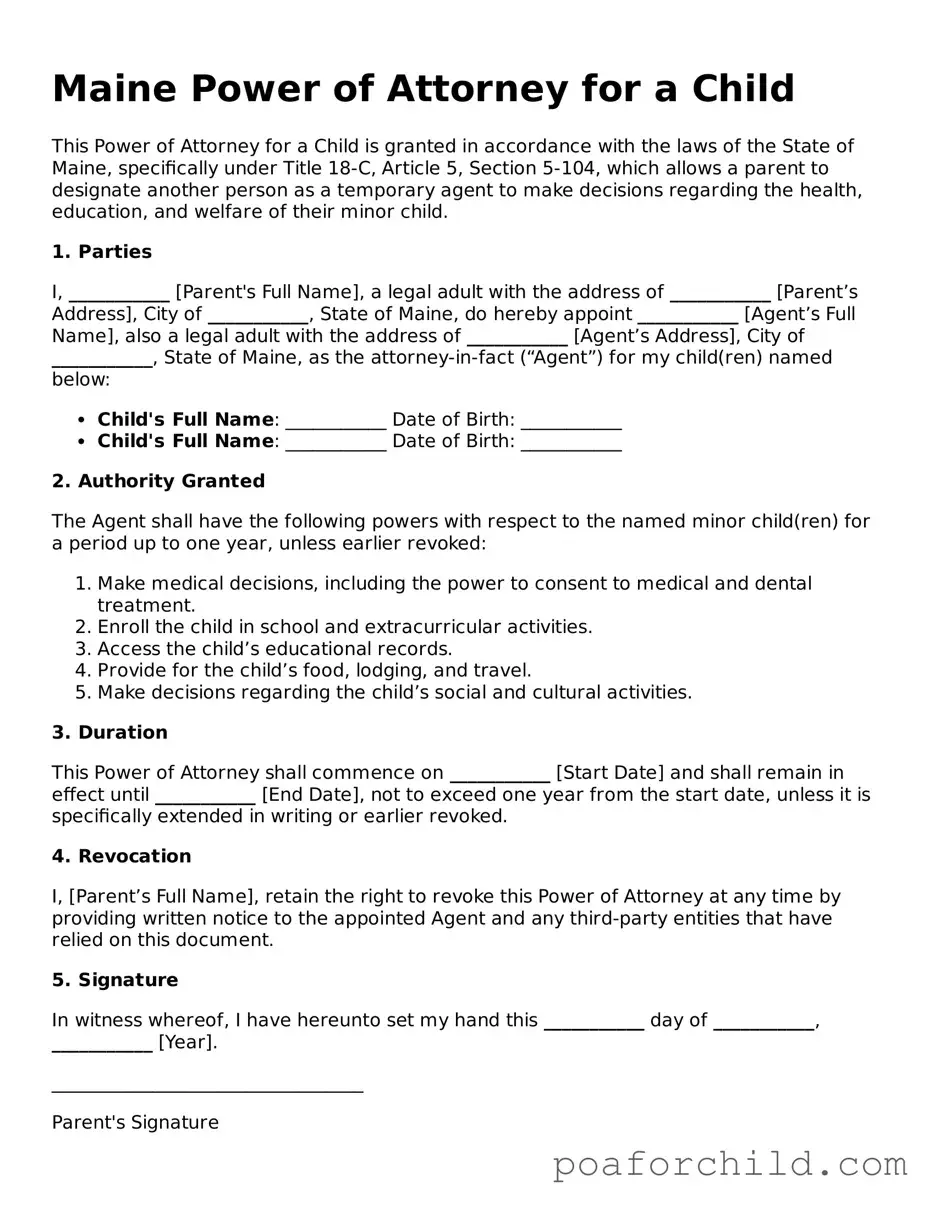Detailed Guide for Using Maine Power of Attorney for a Child
Granting someone Power of Attorney for your child is a significant step, enabling the appointed individual to make decisions and carry out transactions on behalf of your child when you cannot. It's crucial in situations where you anticipate being unable to oversee your child’s needs due to various reasons such as travel, illness, or military deployment. This document ensures that your child's welfare is managed without interruptions, from medical decisions to school-related matters. Getting started with the Maine Power of Attorney for a Child form might seem daunting, but with clear steps, it can be straightforward. Here's how to fill it out:
- Gather necessary information: Before starting, ensure you have all the relevant details such as your child's full name, date of birth, and social security number, as well as the same information for the person you're appointing as attorney-in-fact.
- Identify the form: Search for the most current version of the Maine Power of Attorney for a Child form. This can usually be found on the state's legal aid website or through a local attorney.
- Enter the names: Fill in the full legal names of the child (the principal) and the person you are giving authority to (the attorney-in-fact).
- Specify the powers granted: Clearly describe the specific powers and responsibilities you are transferring. This can range from medical decisions, enrollment in school, to access to bank accounts.
- Include the duration: Specify the start and end dates of the Power of Attorney. If you want it to remain in effect indefinitely, make sure to note that it will only terminate upon your written revocation.
- Signatures: Sign and date the form in the presence of a notary public. In Maine, it's also a requirement for the attorney-in-fact to sign the document, indicating their acceptance of the responsibilities.
- Notarization: Have the form notarized. This usually involves both you and the attorney-in-fact presenting valid identification and signing the document in front of the notary.
- Distribute copies: Provide a copy of the notarized Power of Attorney to the attorney-in-fact and any relevant institutions, such as your child’s school or healthcare provider.
Filling out the Maine Power of Attorney for a Child form is an act of trust and responsibility. By carefully selecting someone to make decisions for your child in your stead, you're ensuring that your child’s daily life and emergency situations can be managed effectively, even in your absence. Remember, this document can be revoked at any time should your circumstances or preferences change.
